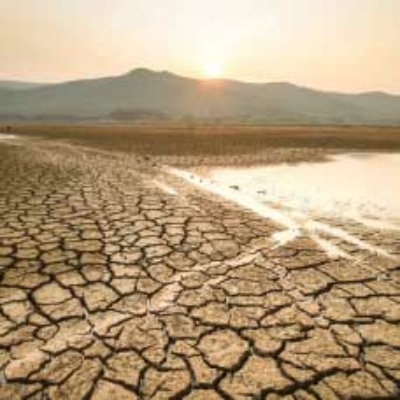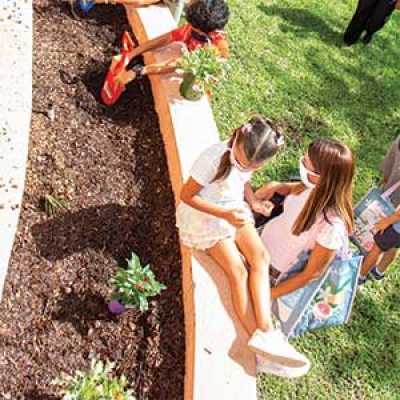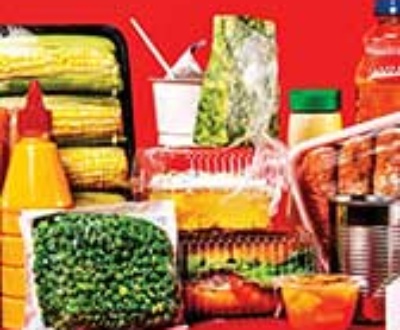A Scientist in the Garden
- April 22, 2021
- Mauro Galetti
Gardens have always inspired scientists to understand how nature works. The British naturalist Charles Darwin conducted many detailed observations and experiments on how natural selection works in his garden in the Down House in England. In one of his numerous observations, he ingeniously explained that there was a correlation between the large number of mice and a decreased number of bee nests, raided by mice and consequently on clover pollination. Darwin wrote “I have found that the visits of bees are highly beneficial to the fertilization of our clovers. Now that the number of mice is largely dependent on the number of cats near villages and towns, I have found the nests of humble bees more numerous which I attribute to the number of cats that destroy the mice. Hence it is quite credible that the presence of a feline in large numbers might determine, through the intervention of mice and then of bees, the frequency of certain flowers in that district”.

My PhD student, Seokmin Kim and I, are offering Caribbean fruits to Galapagos tortoises. This species can act as a potential substitute of extinct Caribbean tortoises.
Like Darwin, I see gardens as a laboratory for natural sciences and education. Gardens are my test tubes. When I started as the director of John Gifford Arboretum on 1st January 2020, I immediately fell in love with the Arboretum. The Gifford Arboretum, founded in 1947, is home of about 500 tree species, mostly from the tropical warm regions. It is a small natural world, and a gift for anyone interested in plants. Although the Arboretum has been transformed over the years by several hurricanes, it has maintained its beauty and diversity. The Arboretum has been used for education, research and especially during the Pandemic, has been an ideal escape and refuge for the Coral Gables community.
The natural history of gardens can take you to distant places that you hardly heard about. Plants from Vanuatu, New Caledonia, Hawaii, Cuba, Brazil and so many distant places are on display for our appreciation, education and research in the gardens of Coral Gables. Because plants cannot walk or move, they evolve strategies to attract animals to “move their genes”. Bees, butterflies and birds, by pollinating their flowers, transfer pollen from one flower to another. Beyond helping the fertilization of flowers, these animals are helping plants to move their genes from plant to plant. Birds, iguanas, foxes, bats and many other animals, by eating fleshy fruits, also move plant’s genes by dispersing their seeds. Without seed dispersal, new seedlings will succumb to the harsh competition with the mother plant or simply will not germinate.

Goetzea elegans, mata boi, produce yellow large fruits likely to be dispersed by giant tortoise in Puerto Rico.
Most of my academic research is dedicated to understanding the outcomes of the interactions between animals and plants in tropical rainforests. What would happen if we lost all animals in the rainforest? Rainforests retain the largest biodiversity in our Planet that evolved during the last 300 million years and their destruction will have strong effect on all of us. Once Prince Charles mentioned “Destroying a rainforest is burning a library without reading the books”. Because tropical rainforests are old and diverse, it is there that, if we were wise enough, we will find the cure for many diseases, the solution for climate change and the materials for sustainability.
During the Pandemic, I had to reinvent myself as a natural scientist. The impossibility to travel to remote rainforests make me more aware about the importance of gardens for my own science. By visiting the Fairchild Tropical Botanical Garden, Montgomery Botanical Center and Gifford Arboretum, which all host fine and diverse collections of plants, I started collecting and measuring the myriad diversity of fruits from the Caribbean Islands without leaving Florida. Caribbean flora is some of the most diverse in the world with more than 11,000 plant species, and it became clear that these botanical gardens are an excellent resource for a natural scientist, like me.

The Lily thorn produce yellow fleshy attractive fruits and it is endemic from The Bahamas. How the Lily thorn disperse its seeds is a mystery to science.
While some of Caribbean plants produce small red or black fruits that attract small birds, I found that some plants have large and yellow fruits, hardly swallowed by any Caribbean animal today. The Lily Thorn (Catesbaea spinosa) is my favorite example. It is a small bush endemic to Cuba and The Bahamas, covered in spines, that produce beautiful long trumpeter flowers. Once pollinated, it produces large yellow “spongy” fruits with hundreds of small seeds. The long tubular yellow flowers are likely to be pollinated by months with long proboscides (tongues). We know very little about the ecology of this plant in the wild, but based on its fruit color and size, this species was likely dispersed by giant tortoises that once roamed the Caribbean islands. These islands were home to more than 10 species of giant tortoises, similar to Galapagos tortoises, four species of primates and a dozen large macaws. All these fruit-eating animals vanished with the arrival of hunter-gatherer humans, and unmerciful pirates. Because plants that produce fleshy fruits rely on animals for seed dispersal, it is a mystery to science how these plants have been dispersed in nature since the extinction of their mutualistic seed dispersal partners. It is likely that most of the plants that once relied on tortoises, primates or other extinct Caribbean animals, are also threatened by the disruption of this crucial mutualism.

Fruits from Chrysophylum oliviformes have been found in sub fossil of giant tortoises in The Bahamas.
Together with UM students, I am testing the effects of Galapagos tortoises and other animals on seed dispersal of several Caribbean fruits. We have found that giant tortoises are excellent seed dispersers and speed up the germination of many Caribbean seeds. Although it is impossible to bring extinct animals back to life, we can restore some lost ecological services by using analogues or similar species. Although controversial, if we can prove that the extinction of these charismatic megafauna is responsible for the rarity of so many plants in the Caribbean Islands, we will have strong arguments for rewilding these islands and rescuing their threatened biodiversity.
About the Author

Mauro Galetti
Dr. Mauro Galetti serves as Director of Gifford Arboretum at the University of Miami. He is faculty at UM's Department of Biology. He was considered one of the top 1% most influential scientists in the world in 2019 and 2020.
Sign up here for email notifications about new Hothouse Blog articles!
More articles on the subject:
More from our blogs
See all postsRecent Posts
- April 2023 April 1, 2024
- Good News on Environmental Plastics February 1, 2024
- Material World / Plant World January 1, 2024
Leave a Comment cancel
This site uses Akismet to reduce spam. Learn how your comment data is processed.















